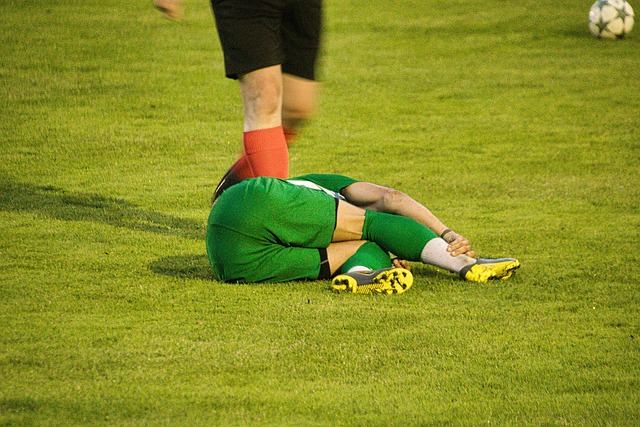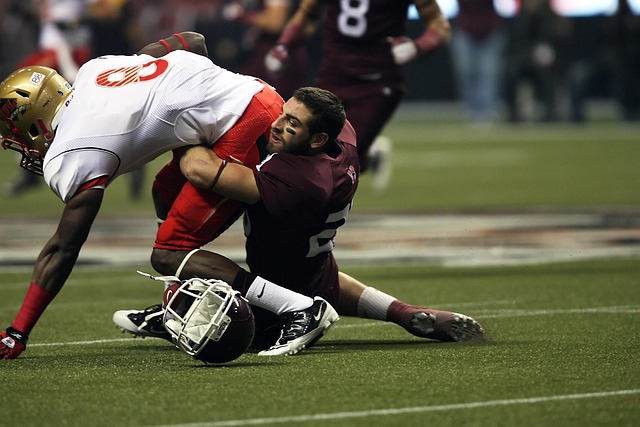After a car crash, reduced range of motion (ROM) due to sprains, strains, or soft tissue damage is common. Chiropractic care is an effective chiropractic care approach for recovery, focusing on range of motion therapy. Chiropractors expertly assess and treat musculoskeletal disorders, realigning the spine and joints to alleviate pain, reduce inflammation, and improve mobility. They combine manual adjustments with targeted exercises and stretching techniques for a holistic recovery plan tailored to restore natural ROM and prevent long-term issues.
After a car crash, it’s common to experience reduced range of motion (ROM). This can lead to discomfort and hinder daily activities. Understanding how ROM is affected post-injury is crucial for recovery. In this article, we explore effective strategies to increase ROM after car crash injuries, focusing on the role of chiropractic care and specific therapy techniques. By delving into these methods, you’ll gain insights into accelerating your recovery journey and reclaiming full mobility.
- Understanding Range of Motion After Car Crash Injuries
- Chiropractic Care and Its Role in Improving Mobility
- Effective Therapy Techniques for Enhanced Recovery
Understanding Range of Motion After Car Crash Injuries

After a car crash, understanding the impact on your range of motion is crucial for effective recovery. Many individuals experience reduced mobility and stiffness in their joints following such an incident. This is often due to various injuries, including sprains, strains, and soft tissue damage. The severity of these injuries can significantly affect your body’s ability to move through its full range during everyday activities or specific exercises.
Chiropractic care plays a vital role in restoring range of motion therapy after car crash injuries. Chiropractors are trained to assess and treat musculoskeletal disorders, focusing on the alignment and function of the spine and joints. Through manual adjustments, they can help alleviate pain, reduce inflammation, and improve joint mobility. Additionally, chiropractors often incorporate specific exercises and stretching techniques to further enhance range of motion, ensuring a comprehensive approach to your recovery journey.
Chiropractic Care and Its Role in Improving Mobility

Chiropractic care has emerged as a valuable tool in the recovery process for individuals who have experienced trauma, particularly following a car crash. After such an incident, it’s common to suffer from reduced range of motion (ROM) due to muscle sprains, joint dislocations, or other injuries. Chiropractic professionals are experts in diagnosing and treating these types of conditions.
Through various techniques, including manual adjustments, chiropractic care aims to restore the body’s natural alignment and promote healing. By improving ROM, patients can regain mobility, alleviate pain, and prevent long-term complications. This type of therapy is particularly beneficial for car crash victims as it helps speed up recovery, reduce the need for invasive procedures, and enhance overall physical well-being.
Effective Therapy Techniques for Enhanced Recovery

After a traumatic event, such as a car crash, restoring range of motion (ROM) is a crucial step in the recovery process. Chiropractic care offers effective therapy techniques to enhance this recovery. Chiropractors use a variety of manual adjustments and mobilizations to improve joint function and promote healing. These methods help alleviate pain, reduce muscle stiffness, and gradually restore ROM.
One common approach involves gentle stretching and strengthening exercises tailored to the patient’s specific injuries. Additionally, heat or ice therapy, along with electrical stimulation, can be employed to reduce inflammation and stimulate nerve repair. By combining these treatments, chiropractic care facilitates a comprehensive recovery, ensuring patients regain mobility and independence after car crash injuries.
After a car crash, experiencing reduced range of motion is common due to various injuries. By understanding these impacts, individuals can seek appropriate treatment, such as chiropractic care, which has proven effective in improving mobility. Incorporating specific therapy techniques further enhances recovery, allowing for a return to normal activities with improved flexibility and reduced pain. Remember, seeking professional help is key to navigating the road to recovery after trauma, focusing on regaining full range of motion through tailored chiropractic and therapeutic approaches.














